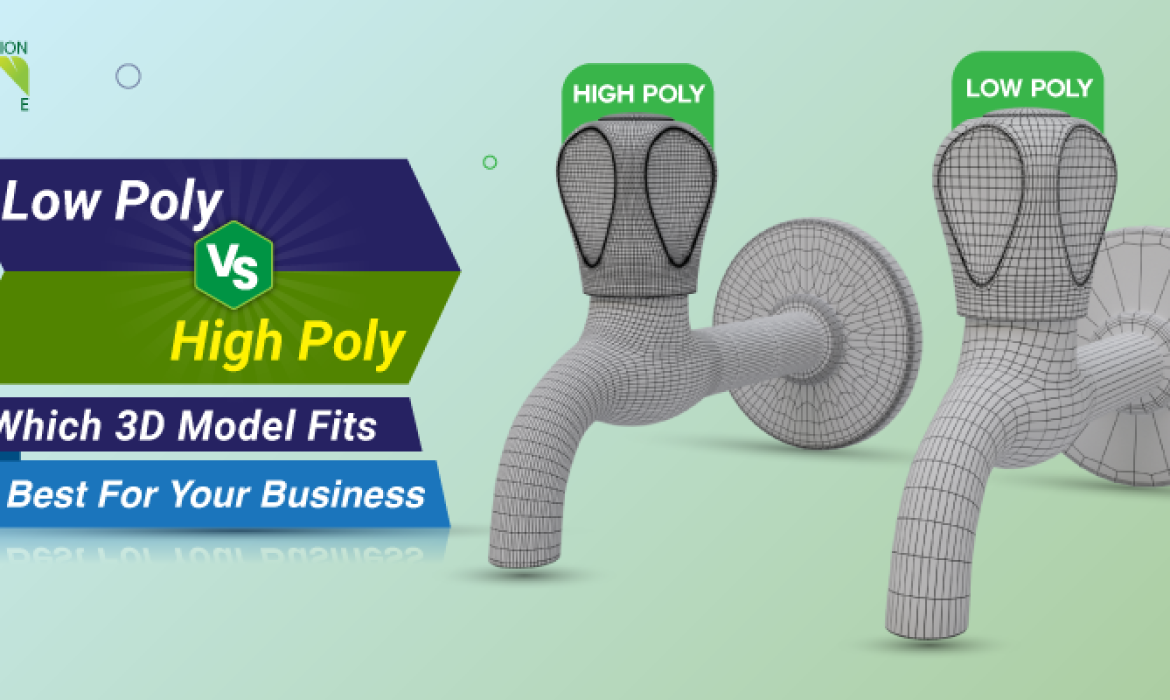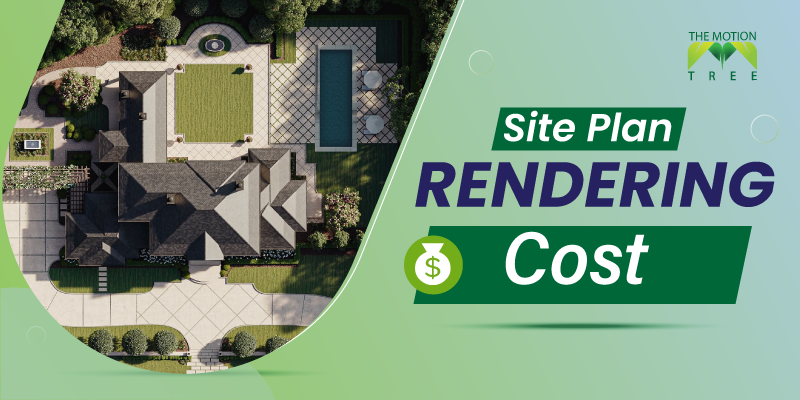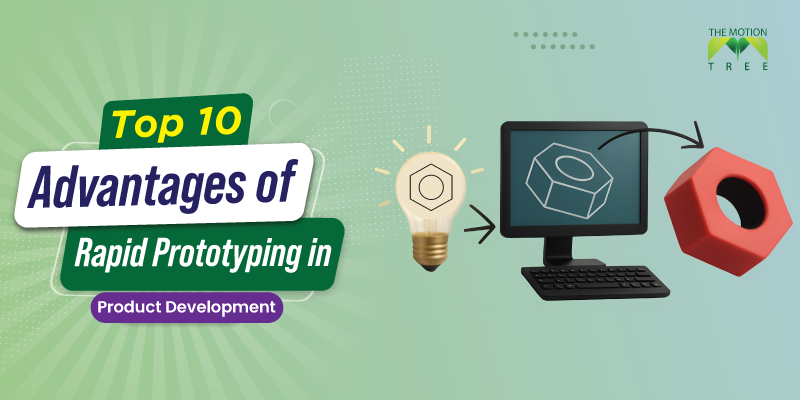![]() +1 929-458-6213
+1 929-458-6213
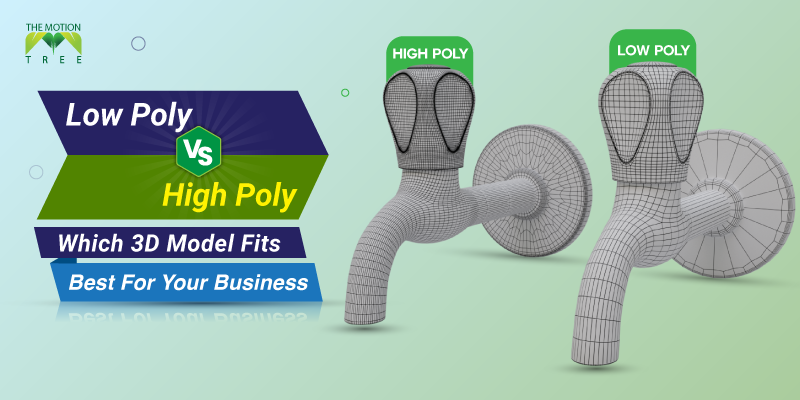
The right 3D model enhances brand presence and engagement, for small business owners, entrepreneurs, or larger organizations, choosing between low poly and high poly models goes beyond technicalities. It’s about storytelling and identity connection.
Low poly might be your best choice if you prioritize simplicity and faster loading times. High poly could be ideal if you value rich details and realism that captivate your audience.
Let’s explore which model fits your business needs and why. It’s time to understand the differences and make a smart choice for your digital journey.
Table of Contents
ToggleLow Poly 3D Models: Definition, Pros, Cons, and Uses
A low poly 3D model is a digital 3D model that uses a relatively small number of polygons to form its shape. “Poly” refers to polygons, which are flat shapes with straight sides, and in 3D modeling. These polygons are usually triangles or quadrilaterals. Low poly models are characterized by their simple, geometric forms and flat, faceted surfaces.
This style of 3D modeling is often used for real-time applications, like video games and virtual reality, where rendering performance is crucial. Reducing the number of polygons minimizes the graphical processing load. It helps to maintain smooth performance on lower-end hardware or devices with limited processing capabilities.
Low poly art has also become popular as an aesthetic choice, particularly in artistic and illustrative contexts. It is valued for its minimalist and abstract appearance.
Pros
- Requires less memory and processing power.
- Ideal for real-time applications like mobile games.
- Offer a unique geometric style.
- Quicker and easier to create.
- Reduce cost and time in prototyping.
Cons
- Cannot achieve fine detail for high-resolution outputs.
- Fewer polygons limit realism.
- Simplicity can limit creative expression.
- Difficult to represent complex textures and details.
- May seem lower quality in high-definition markets.
- It could impact user engagement and marketability.
Ideal Use Cases for Low Poly
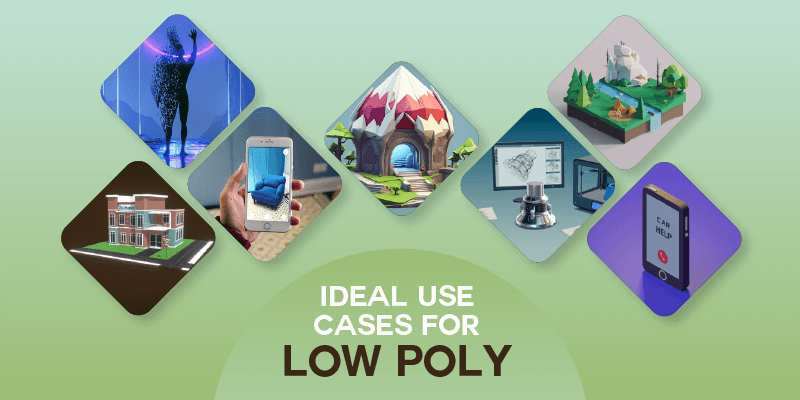
Low poly 3D models are particularly suited for several applications where efficiency and simplicity are key. Here are some of the ideal uses:
Video Games: Low poly models are really popular in video games, especially on mobile and older consoles where the tech can’t handle much. They help games run smoothly and keep the graphics moving quickly.
Virtual Reality (VR) and Augmented Reality (AR): For VR and AR, it’s super important to keep things running fast to avoid making users feel sick. Low poly models are perfect because they don’t overload the system but still keep everything looking good.
Real-Time Simulations: In simulations that run in real-time, like flight simulators or strategy games, low poly models help make sure everything works without lag. It makes the experience better for users.
Educational and Training Programs: Low poly models are great for educational software and training because they keep things simple. They help users focus on what’s being taught without getting distracted by too much detail.
Rapid Prototyping and Concept Design: When designers and developers are just starting out with a new product, they often use low poly models. These models help them shape their ideas quickly and see how things might look early on.
Art and Illustration: Low poly models have a unique, geometric look that’s really cool in digital art, illustrations, and animations. Artists like using them because they give a modern and abstract feel.
Mobile Applications: Since mobile phones can’t handle as much as computers or gaming consoles, low poly models are great. They make sure apps run well, without using up too much battery or making the phone too hot.
High Poly 3D Models: Definition, Pros, Cons, and Uses
A high-poly (high-polygon) 3D model is a type of digital model with many polygons. Polygons, typically triangles or quadrilaterals, are the building blocks of 3D models, used to create the shape and form of the model’s surface. A higher polygon count generally results in more detail and a smoother appearance. This allows for more complex designs and realistic textures.
High-poly models are often used in scenarios where detail and quality are critical, such as in film, animation, and high-end video game graphics. These models can easily capture intricate details like wrinkles, cloth textures, or mechanical components. However, because they contain so many polygons, they require more processing power and memory. It makes them less suitable for real-time applications like video games unless optimized versions are used or powerful hardware is available.
Advantages
- Higher polygon counts make surfaces smoother and more detailed.
- Supports high-resolution textures for better visuals.
- Allows more detailed animations, improving stories and movements.
Disadvantages
- Needs advanced hardware, raising costs.
- Complex and time-consuming to create.
- It may run poorly on weaker devices, causing slow performance.
- Needs careful optimization to prevent lag in real-time scenarios.
Ideal Use Cases for High Poly

Cinematic Visuals and Animation: High poly models provide the level of detail necessary for close-up shots and detailed animations in movies, commercials, and high-end video production, where realism and visual impact are critical.
Video Game Cutscenes: While gameplay often requires lower poly models for performance, cutscenes can utilize high poly models to enhance the visual quality and storytelling without real-time rendering constraints.
Print and Marketing Material: High-resolution images for print media, such as posters and advertisements, benefit from the superior texturing and detail that high poly models can provide.
Product Design and Visualization: In industries where detailed and accurate representations of products are necessary, such as automotive and furniture design, high poly models allow for precise visualization and design refinement.
Digital Doubles and VFX in Films: High-poly models are crucial for creating digital duplicates of actors and complex visual effects in films. They enable realistic interactions and movements that are indistinguishable from real-life counterparts.
Architectural Visualizations: High poly models produce photorealistic renderings of architectural projects, providing clients and stakeholders with a clear and detailed view of proposed designs and interiors.
Medical and Scientific Visualization: Detailed 3D models of anatomical parts or scientific phenomena can be used in educational and research settings to provide clear and detailed representations that enhance understanding and communication.
Detailed Decision-Making: Low Poly vs. High Poly
As you navigate the decision between low-poly and high-poly 3D models for your project, it’s crucial to weigh various factors to find the right fit for your business needs. Here’s my perspective on choosing the model that best aligns with your goals:
Visual Goals and Requirements
High-Poly Models: I would suggest opting for high-poly models if your project requires photorealistic visuals. These are essential for applications like high-end simulations or AAA video games where detail is paramount.
Low-Poly Models: If your project leans towards a more stylized aesthetic, low-poly models could be the better choice. They offer a unique, clean look that’s perfect for artistic projects or games designed for mobile platforms.
Performance and Hardware Considerations
High-Poly Models: These are best for platforms with advanced hardware capabilities. If your target audience typically uses the latest technology, these models will leverage that power to deliver impressive visuals.
Low-Poly Models: For platforms with limited processing power or when aiming for high frame rates in applications like VR, low-poly models are the way to go. They ensure smoother performance and broader accessibility.
Audience Expectations and Market Standards
High-Poly Models: In industries where high-detail visuals are standard like in architectural visualization or cinematic productions, high-poly models are a must.
Low-Poly Models: These models are ideal when your audience values speed and creativity more than hyper-realistic graphics. They cater well to a niche that appreciates an indie or retro aesthetic.
Budget and Timeline
High-Poly Models: Be prepared for a higher investment in both time and money. High-poly models require more detailed work and longer rendering times, but the result is visually stunning.
Low-Poly Models: If budget and time are constraints, low-poly models are more economical and can be produced faster, helping keep your project on track without sacrificing quality.
Scalability and Future-Proofing
High-Poly Models: These models are a good long-term investment, scaling with technological advancements to keep your visuals top-notch.
Low-Poly Models: They offer greater flexibility and are easier to update, perfect for projects requiring quick adaptations or updates.
How The Motion Tree Can Assist
At The Motion Tree, we specialize in both low and high-poly modeling. We provide bespoke solutions tailored to your project’s needs. Our expertise ensures that we deliver optimal performance and aesthetic excellence regardless of the complexity or simplicity your project demands. Contact us to discuss how we can bring your vision to life with the right modeling approach.
Related Posts

